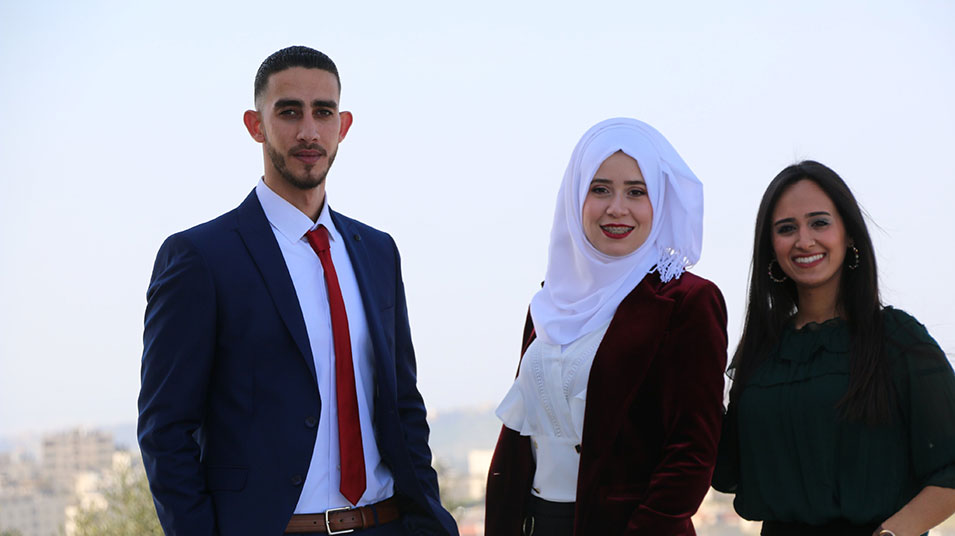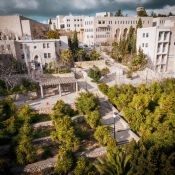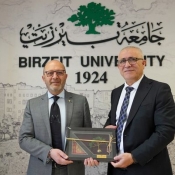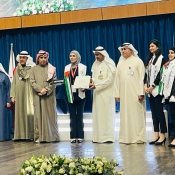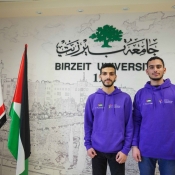Birzeit engineering majors devise system to mitigate power outages
Mosa Hassna, Natalie Malabi, and Majdoulin Farhat, three electrical engineering seniors at Birzeit University, have created an artificial intelligence-driven system that determines the optimal method of restoring electricity in the event of a power outage.
Created in cooperation with the Jerusalem District Electricity Company (JDECO), the system uses advanced algorithms based on graph theory to locate the ideal path to deliver power to the affected region, taking into consideration the existent system load, the availability of smart switches, and the distance between power nodes and lines.
“When a power outage occurs, engineers and operators at power companies manually determine how to reroute electricity from the rest of the grid to the affected area, searching in electric grid maps for the most sustainable path between available power sources and the area in which the outage happened — a process that could take 15 to 20 minutes,” said Hassna, pointing out that “the system our team designed shortens that time to around 1 minute.” He explained that “Our system works a bit like Google Maps, which determines the best traffic route between two places, as it determines the best pathway through which electricity can be rerouted to an outage-affected area.”
The idea that prompted their research was proposed by Amjad Kamal, director of the supervisory control and data acquisition (SCADA) system at JDECO, at a meeting in the company’s headquarters. “We wanted to create something tangible for our capstone project,” Farhat said, “something that truly helps mitigate power grid issues in Palestine.” She noted that the team met on several occasions with staff from JDECO to identify issues they can help with.
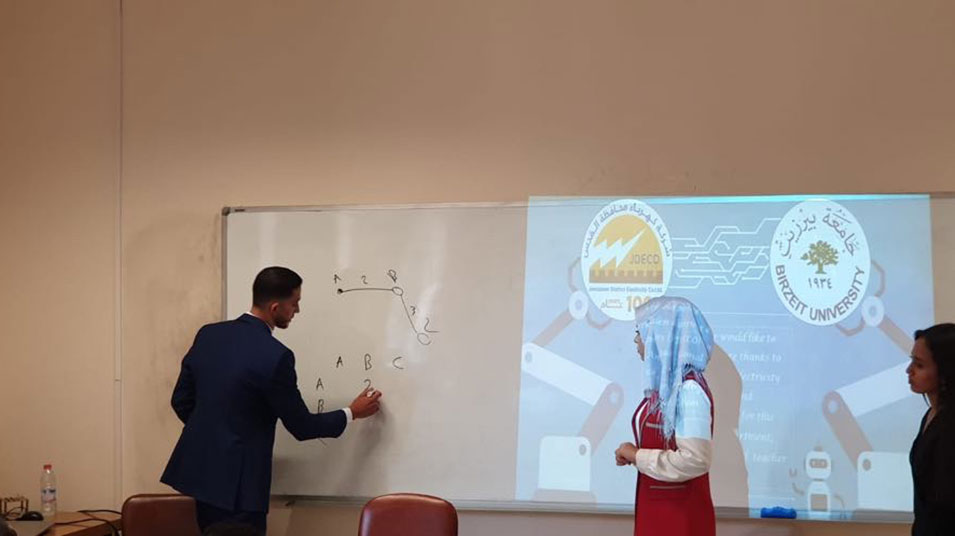
Supervised by Ahmad Alyan, a professor of electrical engineering at Birzeit University, the team trained their system on power grid maps − provided by JDECO − of Shu’afat, Beit Hanina, and Dahiat al’Barid.
“We took data points from the electric grid maps and entered them into the system to give it a digital overview, so to say, of the electric grid in those areas,” explained Farhat. “Once you tell the system that there’s an outage in the area, the system automatically probes all possible paths to reconnect the area to the electric grid.”
The system relies on a range of factors in determining the best possible solution: It first analyzes the load on electric lines in an area. If routing power through one of the possible paths overloads a line, then the system automatically divides power and delivers it through three or more lines. Furthermore, the system takes into account the existence of smart switches that are distributed across the grid. That is, the system prioritizes routing power through nodes with smart switches, as they can be utilized remotely by the power company, which avoids having to send a crew to make the necessary adjustments manually.
For their final test, the team simulated a blackout in Shu’afat, Beit Hanina, and Dahiat al’Barid and told the system to find the optimal solution. Searching through 157 power nodes, the system advised the team that power should be divided and delivered through multiple power lines to mitigate the outage and avoid overloading the electricity network in the area.
In an earlier test, the system couldn’t find a suitable path through which power can be routed without overbearing the power lines, but it did advise operators that power could be alternated between the affected regions until the source of the issue was located and fixed.
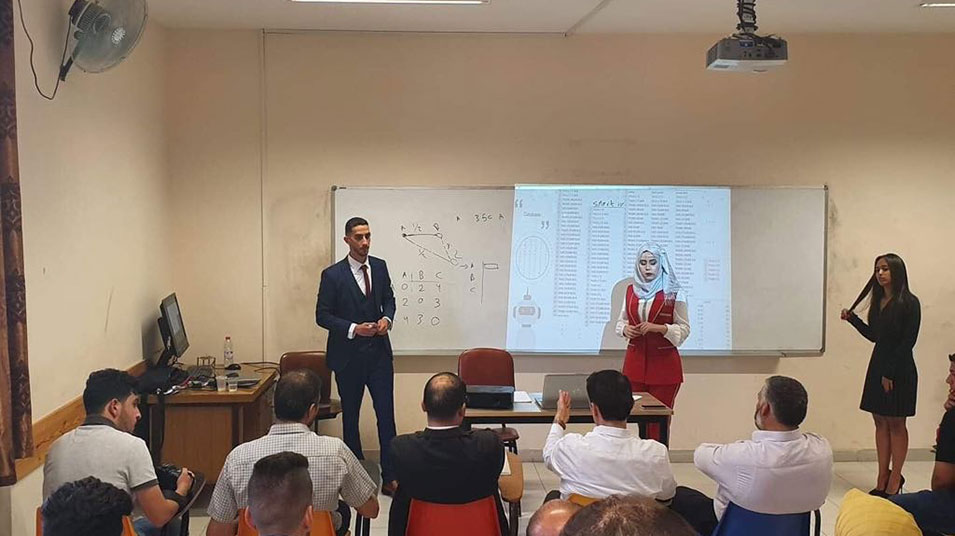
“The system was designed with adaptability and scalability in mind,” emphasized Malabi. “It looks into a range of options, including power re-routing and sharing, and chooses the best option based on criteria we’ve configured after researching issues in the grid and problems with electric delivery in Palestine.”
The team, however, faced a number of challenges in researching and designing the system. JDECO’s SCADA system in Shu’afat, a neighborhood in East Jerusalem, is under Israeli control, and access requires a permit that is hard to attain for Palestinians with Palestinian Authority-issued identity cards. On several occasions, Farhat and Malabi (who hold Jerusalem IDs) had to discuss research issues with Hassna (who holds a West Bank ID and was not able to obtain a permit to enter East Jerusalem), travel to Shu’afat to consult with JDECO’s engineers, and meet with Hassna again to review the results.
“We had to postpone and rearrange many meetings with advisors and consultants due to travel restrictions,” said Malabi. “This proved especially difficult when we were developing the system’s algorithms because this stage required long meetings, and even longer discussions, that necessitated the input and joint efforts of all team members,” she added.
Despite these challenges, the team’s efforts have proven fruitful. Their capstone project is a success, and they have passed with flying colors. As for the system itself, the team will continue to improve its scale and adaptability. They have plans for a fully automated system that not only chooses and carries out steps to mitigate power outages but also helps in distributing electricity across the grid.

